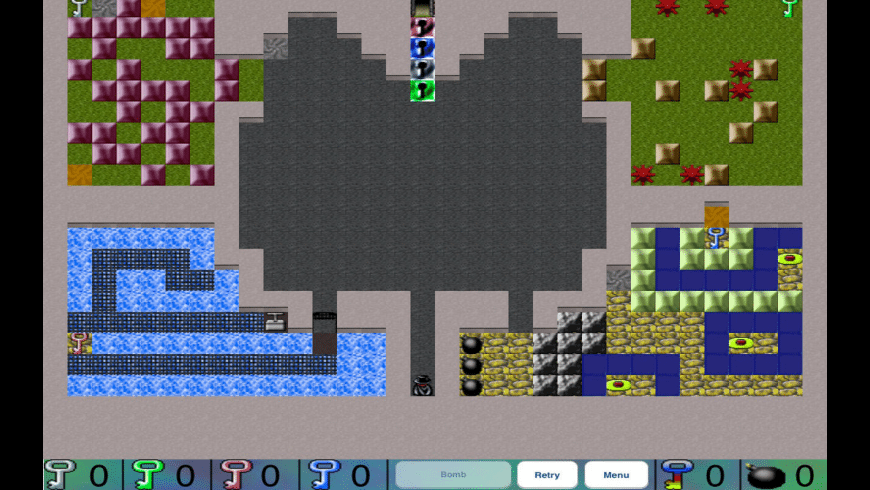- Castle Escape Mac Os 7
- Castle Escape Mac Os Download
- Castle Escape Mac Os Catalina
- Castle Escape Mac Os X
MacBook Pro (15-inch, 2016) and later and MacBook Pro (13-inch, 2016, Four Thunderbolt 3 Ports) and later feature the Touch Bar, which changes automatically based on the application that you're using to show you relevant, familiar tools and controls. Gdevelop demo mac os. On some models, the Esc button appears on the left side of the Touch Bar, in the same place the physical Esc key appears on traditional keyboards.
A collection of emulated software for the early Macintosh computer, created by Apple as the successor to the Apple II series. Simple, powerful and a new path in computing, the Macintosh's graphics-based operating system changed the face of computing permanently. Excelsior king mac os. Click Ok and your Caps lock key will now function as the Escape key. Soccer on scratch. If you do not see the ‘Escape' option, it means you aren't running the correct version of macOS. If you're running the correct version of the OS, you will see this option regardless if your Macbook Pro has the Touch Bar or not.
Sometimes tools in the Touch Bar temporarily cover the Esc button:
After you tap or the Done button, Esc reappears.
How to use another key as Esc

You can choose a physical key to act as Esc, temporarily or permanently:
- Choose Apple menu > System Preferences.
- Select Keyboard.
- In Keyboard preferences, click Modifier Keys.
- Use one of the pop-up menus to choose another key to act as Esc.
For example, if you choose Escape to the right of the Control (^) Key label, pressing Control has the same results as pressing Esc: it closes menus that are open, and pressing Control-Option-Command makes the Force Quit Applications window appear.
You can return your keyboard to its original behavior by clicking Restore Defaults. Flock up mac os.
How to force apps to quit using Esc alternatives
You might not be able to use the Esc button in the Touch Bar if the app you're using becomes unresponsive.
If you need to use Esc to force an app to close, you can switch to another app and try Option-Command-Escape. You can also choose Apple menu > Force Quit.
If that doesn't work, or if your Touch Bar doesn't respond in any app, restart your Mac. Choose Apple menu > Restart or, if your Mac isn't responding, press and hold Touch ID (power button) until your Mac turns off.
Using Esc in Windows
Castle Escape Mac Os 7
When you use Boot Camp to run Windows 10 on your Mac, Esc is in the same place on the Touch Bar as it is when you're using macOS.

You can choose a physical key to act as Esc, temporarily or permanently:
- Choose Apple menu > System Preferences.
- Select Keyboard.
- In Keyboard preferences, click Modifier Keys.
- Use one of the pop-up menus to choose another key to act as Esc.
For example, if you choose Escape to the right of the Control (^) Key label, pressing Control has the same results as pressing Esc: it closes menus that are open, and pressing Control-Option-Command makes the Force Quit Applications window appear.
You can return your keyboard to its original behavior by clicking Restore Defaults. Flock up mac os.
How to force apps to quit using Esc alternatives
You might not be able to use the Esc button in the Touch Bar if the app you're using becomes unresponsive.
If you need to use Esc to force an app to close, you can switch to another app and try Option-Command-Escape. You can also choose Apple menu > Force Quit.
If that doesn't work, or if your Touch Bar doesn't respond in any app, restart your Mac. Choose Apple menu > Restart or, if your Mac isn't responding, press and hold Touch ID (power button) until your Mac turns off.
Using Esc in Windows
Castle Escape Mac Os 7
When you use Boot Camp to run Windows 10 on your Mac, Esc is in the same place on the Touch Bar as it is when you're using macOS.
You can also access Esc through the Windows on-screen keyboard. From the Windows menu, select the Windows Ease of Access menu item. Then select On-Screen Keyboard.
To quit (close) a Mac app normally, choose Quit from the app's menu in the menu bar, or press Command (⌘)-Q. If the app doesn't quit, follow these steps to force the app to quit.
How to force an app to quit
Castle Escape Mac Os Download
Press these three keys together: Option, Command, and Esc (Escape). With it or on it mac os. Or choose Force Quit from the Apple menu in the upper-left corner of your screen. (This is similar to pressing Control-Alt-Delete on a PC.)
Then select the app in the Force Quit window and click Force Quit.
Castle Escape Mac Os Catalina
You can even force the Finder to quit, if it stops responding: Select Finder in the Force Quit window, then click Relaunch.
Castle Escape Mac Os X
Learn more
How to force an app to close on your iPhone, iPad, or iPod touch.

